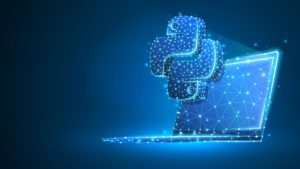

(dTosh/Shutterstock)
Anaconda created a name for itself in the data science community over the past decade by combining hundreds of the most popular Python-based statistical and machine learning packages, such as NumPy, Pandas, and SciPy, into one easy-to-use package. As the GenAI revolution spreads across the land, the Austin, Texas-based company is now looking to find stronger footing to take it to the next decade.
In January, Anaconda announced a change at the top of its org chart, with longtime member of the board of directors Barry Libert taking over the CEO position and Peter Wang moving to head up the company’s new AI Incubator as its Chief AI & Innovation Officer. The company stated the goal of the change was to a further accelerate growth of the company, which already had expanded its enterprise customer count by 15x since 2020 and just had its biggest quarter in Q4 2023 while reducing its burn by 65%.
Libert and Wang recently made time for an abbreviated Q&A with Datanami, which is published here.
Datanami: Barry, what are your goals as the new CEO of Anaconda? What changes will you make to achieve them?
Libert: Since stepping into my role as CEO of Anaconda, my primary goal has been to build the leading AI enablement platform for the open-source world. Python is the foundation of modern AI and as the most trusted and widely used platform in the Python community, supporting nearly 50 million users and 800,000 organizations, Anaconda has a huge role to play in ensuring that the future of AI remains open, accessible, and secure.
The open-source Python community has been instrumental to Anaconda’s success and continuing to source innovation from open-source communities will keep Anaconda at the cutting edge. Between the partnerships we’ve established with industry leaders like IBM, Oracle, and Snowflake, and the open-source investments we’ve made through PyScript, Panel, and funding NumFOCUS, Anaconda is building a platform for everyone that wants to innovate and create. This isn’t a change in strategy but rather a doubling down on everything we’ve learned about building a thriving community.
AI is central to our vision for expanding Anaconda’s platform from 50 to 500 million users and 800,000 organizations to 5 million or more. More and more people will experience and work with AI in their daily lives and Anaconda will meet them at every stage of their journey. From the complete non-technical user to the most advanced AI developer, we recognize the importance of delivering to our users a seamless experience that allows them to succeed in any arena, whether that’s on-premises, in the cloud, or at the edge.
I am confident that with our talented team, vibrant community and partners, and a strong commitment to pioneering AI, Anaconda will build the platform for the open-source AI world.
Datanami: Peter, how does the AI Incubator fit in with Anaconda’s mission in the past, and how do you see it helping create what Anaconda will become in the future?
Wang: We created Anaconda in 2012 out of the need to bring Python into business data analytics and from the start, we’ve had an ongoing commitment to foster open-source innovation. Over the years the use of Python has grown instrumentally and our mission to empower the world with the power of AI, data science, and Python has remained at the core of everything we do.
Today, Python plays a central role in AI development – anyone using the tech has Python within some layer of their stack, making the creation of our AI Incubator a natural extension of our business. It’s also a step forward in our ongoing support to enable global institutions – from corporations to academia – in harnessing the power of open source, not only for competitive advantage but to also create a better world. I’m proud to be leading our AI Incubator and to oversee our developments in advancing Python performance in AI workloads.
Anaconda has become the foundation of modern AI development and as our world continues to become AI-driven, there’s a mounting need for a unifying force that simplifies the experience and delivery of AI applications. With the developments coming out of our AI incubator, paired with our Python and data science expertise, we see Anaconda becoming the operating system for AI – creating a bridge between AI and the next wave of human invention.
Datanami: Peter, why is Anaconda part of the AI Alliance? Why is it necessary to have openness and transparency in the AI field?
Wang: Our mission centers around helping to power AI innovations and, as AI continues to infiltrate our society, ensuring that these advancements are happening in an open, secure, and responsible way so that businesses and society at large are positively impacted by the tech. By joining the AI Alliance, we’re able to collaborate with other industry leaders on breakthrough AI developments in a way that encourages safety and accessibility – both of which are critical pillars to the future of innovation.
We see openness and transparency as the best path forward, not only for AI but also for its impact on humanity. In the ongoing debate between how open AI should be, we believe AI developments shouldn’t be siloed and are strong advocates that the future of AI rests upon an open source foundation. AI advancements are increasingly happening behind closed doors, creating an environment that not only makes it difficult to ensure that these developments are remaining ethical and democratic but one that is also causing the public to lose trust.
By taking an open-source approach to AI, trust can be built at scale by providing users more direct visibility into these developments and the ability to ease bias, ethical or security concerns. This level of transparency will be paramount in building more confidence in AI systems
Related Items:
Anaconda’s Commercial Fee Is Paying Off, CEO Says
Open Source Still Rolling, But Roadblocks Loom
Why Anaconda’s Data Science Tent Is So Big–And Getting Bigger
September 16, 2025
- MongoDB Launches AI-Powered Application Modernization Platform to Reduce Technical Debt and Speed Innovation
- UC San Diego Plays Key Role in National Effort to Build a Fusion Research Data Platform
- NVIDIA Welcomes Data Guardians Network to Its Elite Startup Program
- Acceldata Survey Finds Persistent Gaps in Enterprise AI Data Readiness
- Exabeam and DataBahn Partner to Accelerate AI-Powered Security Operations with Smarter Threat Detection
- Domino Data Lab Achieves ISO 9001 and SOC 2 Type II With Zero Findings
- Qlik Open Lakehouse Now Generally Available, Giving Enterprises Rapid, AI-Ready Data on Apache Iceberg
- Expert.ai and Springer Nature Partner to Transform Clinical Trials with AI-Driven Intelligence and Deep Domain Expertise
- Denodo Expands AI Capabilities with Release of DeepQuery in Platform 9.3
- Indicium Receives Investment from Databricks Ventures
- DataOps.live Launches Major Upgrade to Deliver AI-Ready Data at Enterprise Scale
- Ethernet Alliance to Showcase Multivendor Live Demonstration at ECOC 2025
- Allot Leverages SnapLogic to Launch AI Agent to Highlight Health Inequalities in Pharma
September 15, 2025
- Penn State Center for Social Data Analytics Now Accepting Grant Applications
- Pacific Wave, Cal Poly Humboldt, and Internet2 Collaborate on Connectivity to Singapore, Guam, and Jakarta
- Governing AI Starts with Giving Users Control Over Their Data
- KX and OneTick Merge to Unite Capital Markets Data, Analytics, AI and Surveillance on One Platform
- Snowflake Ranked by Fortune as #1 on Its Future 50 2025 List
- Exabeam and Cribl Partner to Power Scalable, High-Fidelity Threat Detection with Next-Gen Data Pipelines
September 11, 2025
- Inside Sibyl, Google’s Massively Parallel Machine Learning Platform
- What Are Reasoning Models and Why You Should Care
- Beyond Words: Battle for Semantic Layer Supremacy Heats Up
- Rethinking Risk: The Role of Selective Retrieval in Data Lake Strategies
- Software-Defined Storage: Your Hidden Superpower for AI, Data Modernization Success
- The AI Beatings Will Continue Until Data Improves
- What Is MosaicML, and Why Is Databricks Buying It For $1.3B?
- Why Metadata Is the New Interface Between IT and AI
- Top-Down or Bottom-Up Data Model Design: Which is Best?
- How to Make Data Work for What’s Next
- More Features…
- Mathematica Helps Crack Zodiac Killer’s Code
- GigaOm Rates the Object Stores
- Solidigm Celebrates World’s Largest SSD with ‘122 Day’
- Promethium Wants to Make Self Service Data Work at AI Scale
- Databricks Now Worth $100B. Will It Reach $1T?
- AI Hype Cycle: Gartner Charts the Rise of Agents, ModelOps, Synthetic Data, and AI Engineering
- MIT Report Flags 95% GenAI Failure Rate, But Critics Say It Oversimplifies
- The Top Five Data Labeling Firms According to Everest Group
- Data Prep Still Dominates Data Scientists’ Time, Survey Finds
- Career Notes for August 2025
- More News In Brief…
- Seagate Unveils IronWolf Pro 24TB Hard Drive for SMBs and Enterprises
- Gartner Predicts 40% of Generative AI Solutions Will Be Multimodal By 2027
- DataSnap Expands with AI-Enabled Embedded Analytics to Accelerate Growth for Modern Businesses
- Acceldata Announces General Availability of Agentic Data Management
- Transcend Expands ‘Do Not Train’ and Deep Deletion to Power Responsible AI at Scale for B2B AI Companies
- Pecan AI Brings Explainable AI Forecasting Directly to Business Teams
- SETI Institute Awards Davie Postdoctoral Fellowship for AI/ML-Driven Exoplanet Discovery
- NVIDIA: Industry Leaders Transform Enterprise Data Centers for the AI Era with RTX PRO Servers
- Hitachi Vantara Recognized by GigaOm, Adds S3 Table Functionality to Virtual Storage Platform One Object
- Ataccama Data Trust Assessment Reveals Data Quality Gaps Blocking AI and Compliance
- More This Just In…








































